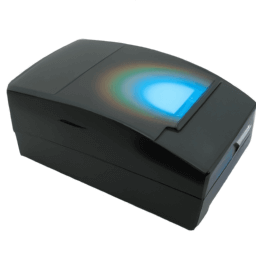What is drum scanner and its usage?
A drum scanner is a high-end device used for scanning photographic film, transparencies, and other reflective materials. It uses a rotating drum to capture high-resolution images with exceptional color accuracy and detail. Drum scanners are commonly used in the printing industry, where high-quality reproductions are required. They are also used in the preservation of historical documents and artwork. The scanning process is slow and requires a skilled operator, but the results are unmatched by other scanning technologies.
What is a Drum Scanner and Its Usage?
A drum scanner is a specialized type of scanner that uses a rotating drum to capture high-resolution images. It is commonly used in the printing industry to create high-quality reproductions of photographs, artwork, and other images for use in magazines, books, and other printed materials.
How Does a Drum Scanner Work?
A drum scanner works by placing the image to be scanned on a glass plate that is mounted on a rotating drum. The drum spins at a high speed while a series of mirrors and lenses capture the image and convert it into a digital format that can be stored on a computer or other digital storage device.
One of the key advantages of a drum scanner is its ability to capture images at extremely high resolutions. This makes it ideal for printing applications where the quality of the image is critical. Drum scanners can capture images at resolutions of up to 10,000 dots per inch (dpi), which is far higher than most other types of scanners.
Usage of Drum Scanners
Drum scanners are commonly used in the printing industry to create high-quality reproductions of photographs, artwork, and other images for use in magazines, books, and other printed materials. They are also used in the film industry to create high-resolution scans of film negatives and positives.
Because of their high resolution capabilities, drum scanners are also used in scientific and medical applications where the quality of the image is critical. For example, they are used to capture high-resolution images of cells and other microscopic structures for use in research and medical diagnosis.
Advantages of Drum Scanners
One of the main advantages of a drum scanner is its ability to capture images at extremely high resolutions. This makes it ideal for printing applications where the quality of the image is critical. Drum scanners can capture images at resolutions of up to 10,000 dots per inch (dpi), which is far higher than most other types of scanners.
Another advantage of drum scanners is their ability to capture images with a high degree of accuracy and detail. This is because they use a series of mirrors and lenses to capture the image, which allows for a more precise and accurate representation of the original image.
Disadvantages of Drum Scanners
One of the main disadvantages of drum scanners is their cost. Drum scanners are typically much more expensive than other types of scanners, which can make them cost-prohibitive for many users.
Another disadvantage of drum scanners is their size and complexity. Drum scanners are typically large and bulky, which can make them difficult to transport and use in small spaces. They also require a high level of technical expertise to operate, which can be a barrier for some users.
Comparison Table
| Features | Drum Scanner | Flatbed Scanner |
| Resolution | Up to 10,000 dpi | Up to 2400 dpi |
| Accuracy | High | Medium |
| Cost | Expensive | Affordable |
| Size | Large and bulky | Compact |
Sharing is caring!
Facebook Twitter Email
Recommended articles for Scanner
Scanner types and buying guide
-
Scanner buying guide. Comprehensive guide to buy scanner
-
What is flatbed scanner and its usage?
-
What is sheet fed scanner and its usage?
-
What is drum scanner and its usage?
-
What are the drum scanner advantages and disadvantages
-
Difference between drum scanner and flatbed scanner
-
What is handheld scanner and its usage?
-
What are computer scanner advantages and disadvantages


